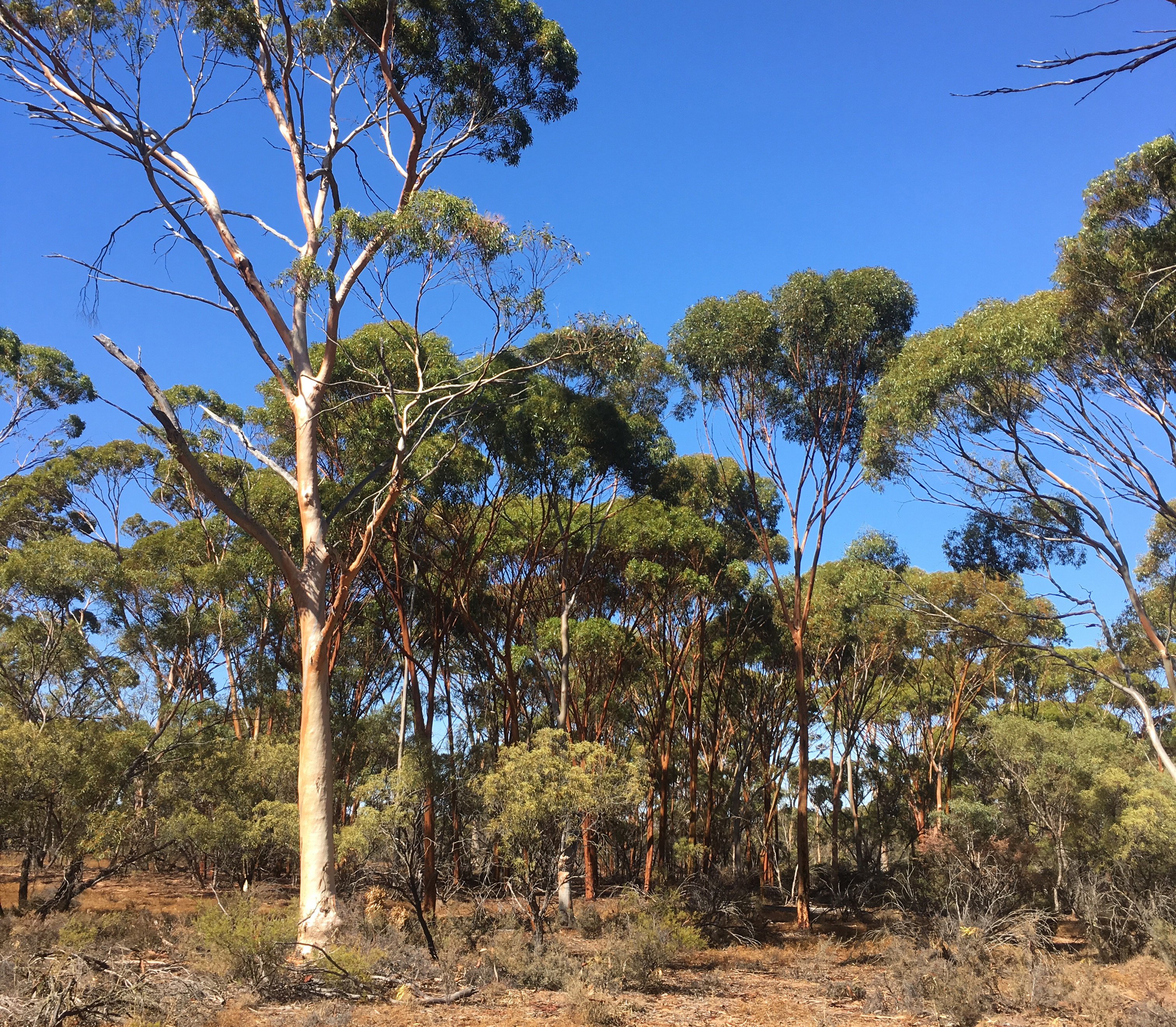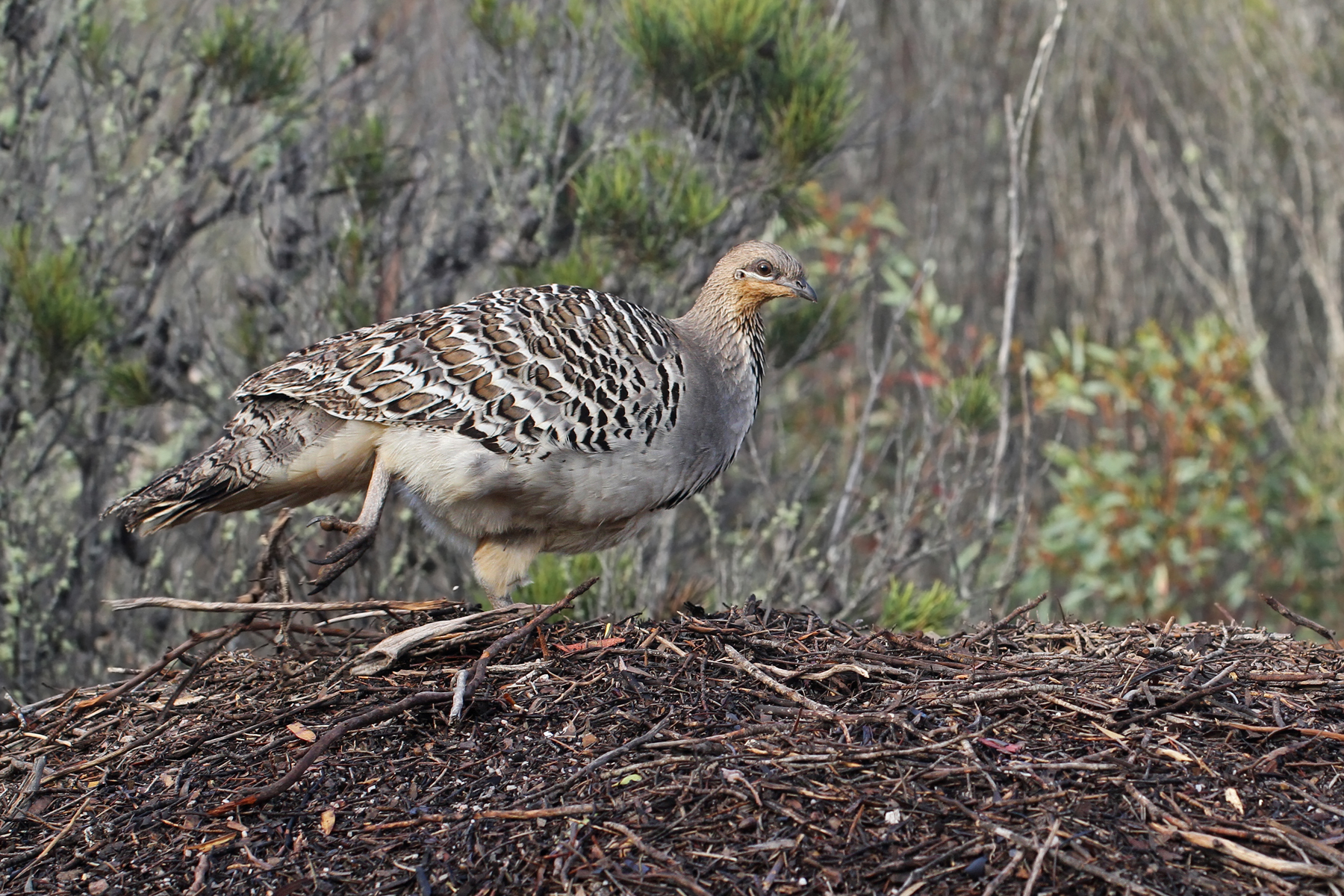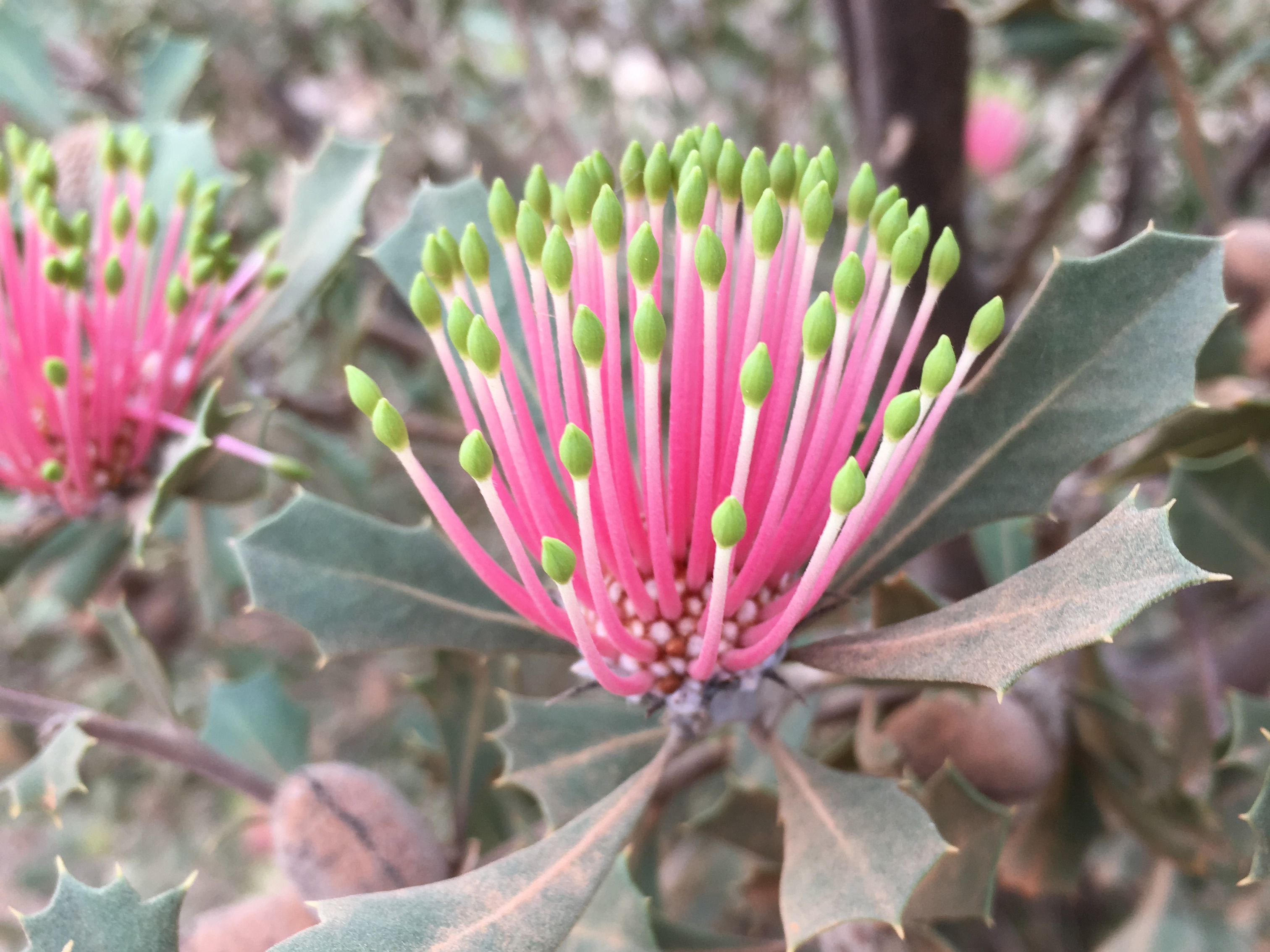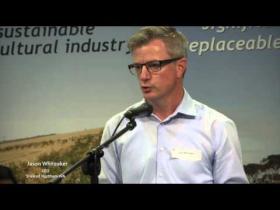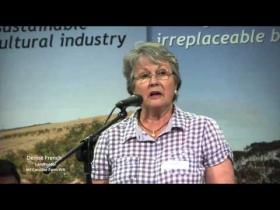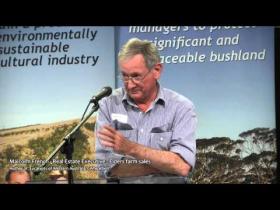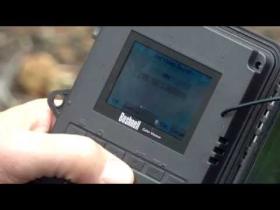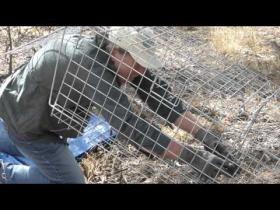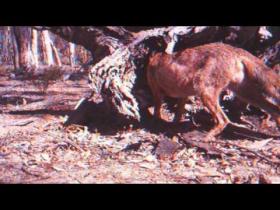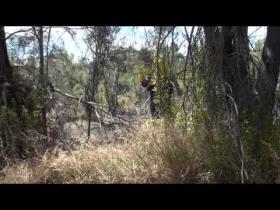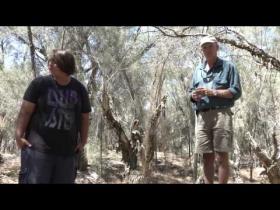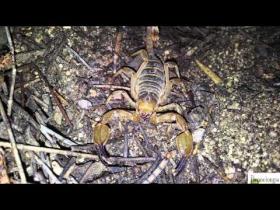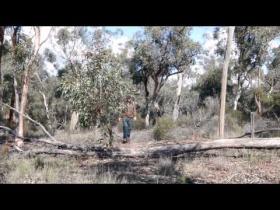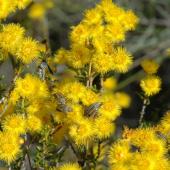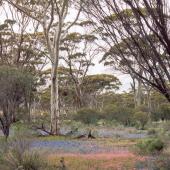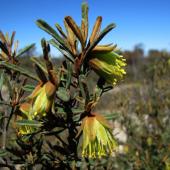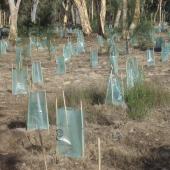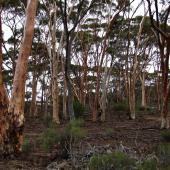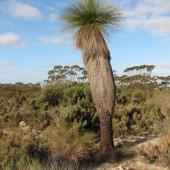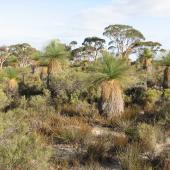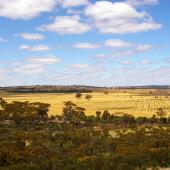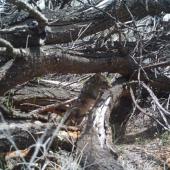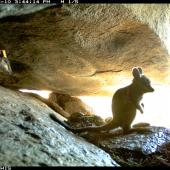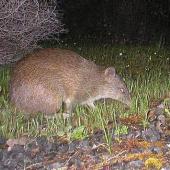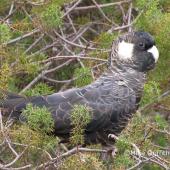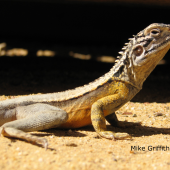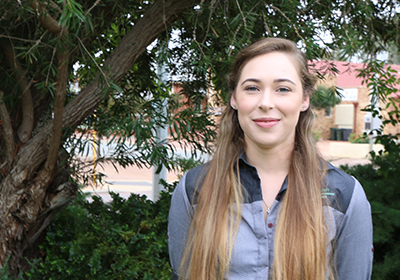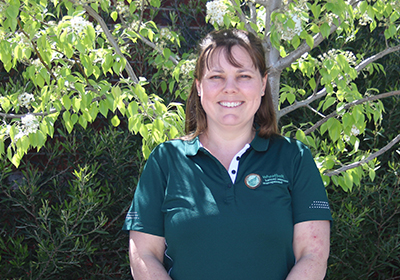Wheatbelt NRM’s Healthy Environments program works in active cooperation with the Wheatbelt community to protect and manage biodiversity in the Wheatbelt.
Wheatbelt NRM is an independent community-based organisation involved with natural resource management in the Avon River Basin. As part of a non-government, not-for-profit organisation, the Wheatbelt NRM Healthy Environments team works in partnership with individuals and community groups across the region to improve the management and sustainability of natural resources, and make positive change to native biodiversity in local environments. Our program incorporates numerous projects across the Avon River Basin, which aim to provide benefit to both biodiversity and productive land use outcomes in a sustainable manner.
Some of the ways in which we achieve these outcomes include:
- Working with private land managers to identify and protect priority remnant bushland through management activities
- Providing funding for fencing, revegetation and invasive species management to protect and enhance remnant bushland
- Conducting practical and educational workshops related to natural biodiversity management
- Facilitating community participation in rabbit and fox control programs
- Reducing the impact of Weeds of National Significance on the river systems and wetlands within the Avon catchment
- Promoting awareness of natural biodiversity issues in our young generation through school engagement
Each of our surveys are hosted on Survey123. Click here to learn more - www.wheatbeltnrm.org.au/survey123
Natural resource management (NRM) is about taking care of all nature-based resources (including water, soil, plants and animals), with a particular focus on how the management affects the quality of life for both present and future generations. It looks at the sustainable use of these resources and their long-term profitable management, as well as maintaining strong and resilient communities associated with their utilisation.
Biodiversity (biological diversity) is the variety of plant and animal life existing in a given area or environment. It essentially includes all living things, as well as the ecosystems they form, and therefore is considered a natural resource. Everything from micro-organisms in the soil, to grasses, trees, birds, mammals, reptiles, fish, insects, etc. make up the biodiversity of an area, whether they are common or rare species.
Biodiversity can be measured in a number of ways depending on whether you are looking at ecosystem scale, communities of plants or animals, or even genetic variation within a population, but the most commonly used measure is the number of different species occurring in a defined area. Another term sometimes used in context with biodiversity is “Biological Integrity”. This term coined by Angermeier and Karr in 1994 (Cited in Wallace et al., 2003) refers to “Native species populations in their historic variety and numbers naturally interacting in naturally structured biotic communities”. Basically, it is the biodiversity as it would have been without human intervention. This is not commonly seen except in remote and/or well protected places, and is not a realistic goal in productive landscapes, but one aim of most biodiversity conservation projects is to maintain or restore some degree of this integrity, so that the major elements and naturally occurring processes of the area remain intact.
The South-west of Western Australia is rich in biodiversity, with large numbers of plants and animals being endemic to the region (meaning they don’t occur anywhere else). You may have heard of it being called a “Biodiversity Hotspot”, a term which means an area with significant biological diversity, which has also lost at least 70% of the original habitat and is therefore at risk of destruction. The label is therefore a bit of a double-edged sword. The Avon River Basin (ARB) in the Wheatbelt falls within this South-west ecoregion, with approximately 10% of our plant species only found in the ARB. The ARB covers a large portion of the Great Western Woodlands, which is the largest intact Mediterranean-climate woodland left on Earth. Our region encompasses many priority plants and wildflowers, as well as the majority of the “Eucalypt Woodlands of the Western Australian Wheatbelt”, which were recently listed as Critically Endangered under the EPBC Act by the federal government.
The Wheatbelt is also home to numerous iconic and threatened wildlife species, including the Numbat, Chuditch, Echidna, Malleefowl, Phascogales, Black Cockatoos, Dunnarts, Western Spiny-tailed Skink, Southern Brown Bandicoot, Western Yellow Robin, Shield-backed Trapdoor Spider, Scarlet Robin, Black-flanked Rock Wallaby and the Arid Bronze Azure Butterfly. However, although the Wheatbelt contains some of the world’s most valuable biodiversity assets, we also face some of the biggest challenges in terms of hanging on to them. Being a primarily agricultural region, historical clearing for land use resulted in more than 80% of native vegetation being removed between the 1890s and 1980s (WWF, 2016). Whilst this enabled farmers to establish crops and pasture to feed the masses, it also drastically reduced and fragmented habitat for both plants and animals, and as clearing was selectively targeted at more fertile soils and valley floors, many species that relied on these habitats were lost from the region. In addition, the lack of deep-rooted vegetation combined with other farming practices changed hydrology across the landscape and disrupted natural processes, leading to issues like salinity and soil degradation. Introduced species that favoured agricultural conditions and open ground also thrived (eg. rabbits in the new grasslands and altered soil structure, foxes preying on lambs, weeds with open space and supplemented nutrients or pest control).
In more recent times, there has been an increasing awareness of the importance of maintaining biodiversity assets and ecosystem services, and many landholders in the Wheatbelt region are working to restore or protect native biodiversity on their property, as they recognise its value with regards to sustainability and land productivity (as well as recreational or personal enjoyment). Many are also noting the positive effect biodiversity assets are having on property appeal and sale price. This shift to incorporate healthy biodiverse systems as part of good overall land management is vital to making real improvements to the biodiversity and native bush in our region, particularly because, with as little as 7% of original vegetation remaining in the Central Wheatbelt (Saunders, 1989) and typically less than 20% across the wider region, more than half of that is located on private land.
Maintaining or improving native biodiversity can bring numerous benefits for:
Productive Land Use Values
- Increased soil microbial activity and health
- Return towards appropriate hydrology
- Reduction in salinity levels and waterlogging
- Increased shade and wind protection for livestock
- Increased variety of pollinators
- Improvement in soil stability / less sedimentation in waterways
- Reduction of soil moisture loss to evaporative winds
- Healthier livestock with less loss to feral predators
- Natural insect control
- Improvement in overall system health and function
- Increased sustainability and farm longevity
- Opportunities for alternative business (e.g. wildflower tourism, farmstay retreats)
- Personal Appreciation / Human Values
- Aesthetics of the landscape
- Recreational enjoyment (e.g. shade, birdsong)
- Improved natural amenities (e.g. clean waterways, reduced dust levels, healthier gardens)
- Educational value (e.g. identifying wildlife, observing plant regeneration)
- Philosophical/Spiritual satisfaction (e.g. leaving a positive legacy for the next generation)
- Cultural connection
- Mental wellbeing and resilience
- Increased appeal of the property to visitors or potential buyers
- Environmental Values
- Improvement in overall ecosystem health and function
- Increased habitat and food sources for wildlife
- Increased soil microbial activity and health
- Return towards appropriate hydrology
- Reduction of salinity
- Improvement in soil stability
- Reduced sedimentation in waterways
- Increased chance of recovery for Threatened species
- Nutrient cycling (especially from deeper soils)
- Increased rates of natural plant recruitment
- Carbon fixing
- Flood mitigation
It is worth noting that many of the benefits fit into both Productive Land Use and Environmental Values as the two themes are interlinked, productivity being boosted by healthy environmental conditions. A gain in either of these two categories can also flow directly on to personal benefits. For example, if land use is more profitable or requires less work effort, it allows people to enjoy more of the other aspects of life such as recreational pursuits, travel or spending time with family.
If you have new ideas for activities on your lands we are always looking for community input into our Programs, so please give the Wheatbelt NRM Healthy Environments Project Managers a call to discuss the ideas with them or simply submit the idea through our website at:
Biodiversity can be supported by a wide range of activities, such as fencing off bush remnants, controlling feral predators and environmental weeds, enriching existing habitat or planting for revegetation. Different activities will have varying benefits depending on the area in which they are undertaken and which other activities are being used in conjunction. Simply looking after local bushland and the things that live in it is a way of maintaining the environmental assets we have, or improving their quality or abundance. It is important to note also that efforts are synergistic, so the more people there are actively working to improve native biodiversity and bush health, the more momentum each action will carry. If a number of people in an area work together, as many neighbours or interest groups do, the better the overall gains will be. There are a lot of things we can do individually, however, to take steps towards biodiversity goals to better our immediate environment and personal conditions. To learn more about the variety of things you can do to support biodiversity, simply check out the topics and projects listed below, enquire about our funding opportunities, or contact one of our team. By managing the natural resource of native biodiversity in a positive way, we aim to gain at least some of those benefits previously mentioned, therefore improving quality of life for ourselves, the community, the planet and future generations.


